Idea by
Wenbo Fu, Charlotte Timmers, Maria Zouroudi
Call for ideas 2017
Synergies of Energy. Waste, Mobility
Synergies of Energy. Waste, Mobility
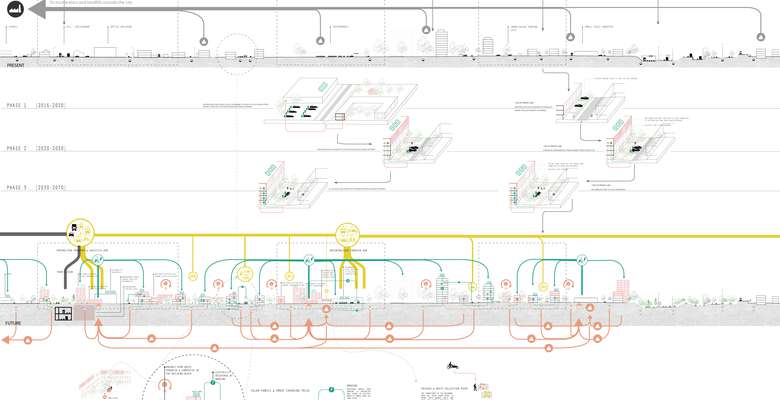
Rather than regarding energy, waste and mobility as separate entities we explore possible synergies and exchanges between them, using the theory of ‘systemic design’ as a background, and the systemic section as a tool. This approach helps us envision a new, more integrated urban environment, based on the interaction of different networks that gradually transform and activate space in the city, neighborhood and block scales, resulting in three typologies: the centralized transfer hub at the edge of the belt, the decentralized neighborhood hub and the typical neighborhood of the generic tissue condition.
Some of the main principles behind our strategies are minimization of the use of private car, multi-modality in the transportation of people and goods, resource exchange between different actors, proximity between living and working places, as well as activation of the neighborhood through the creation of shared space.
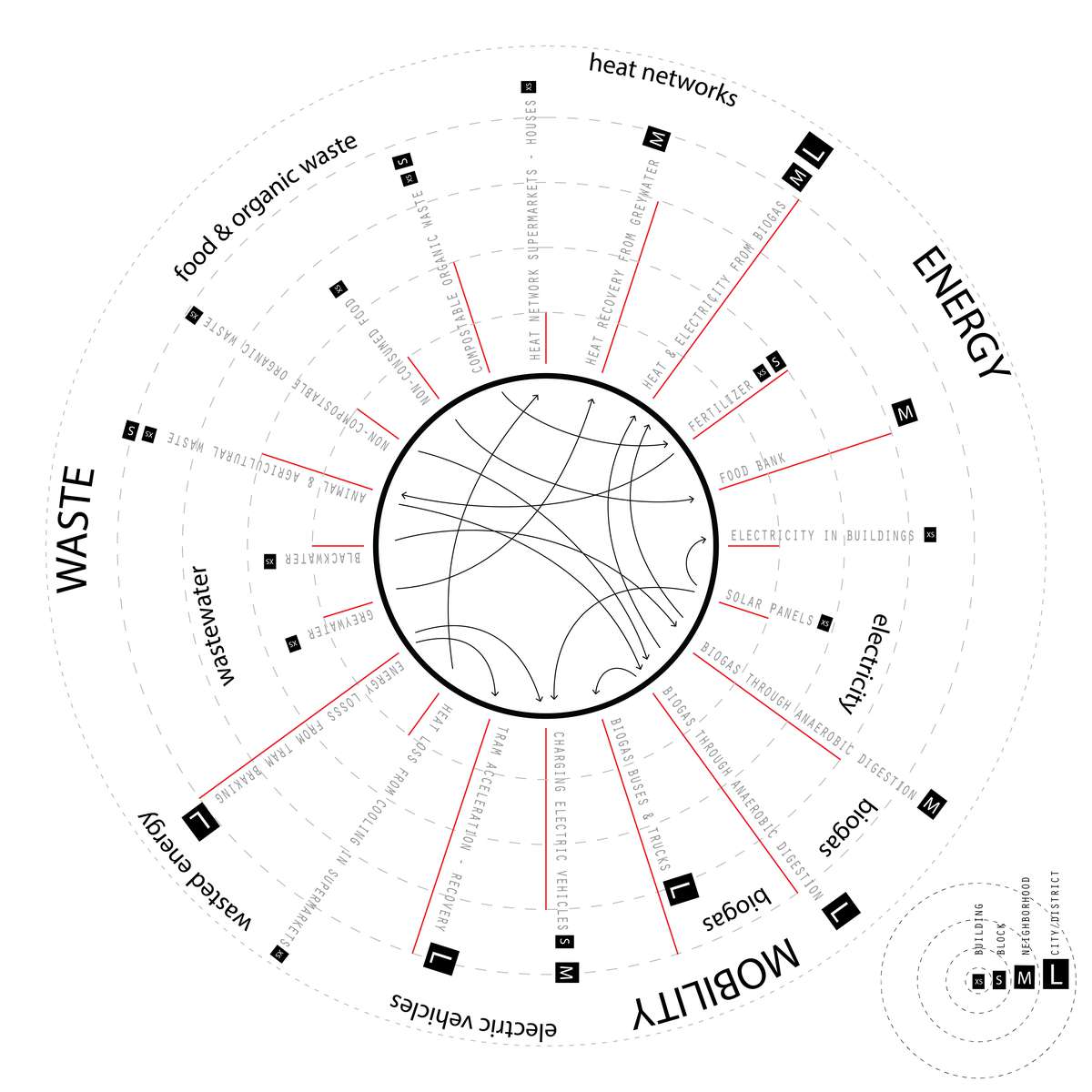
Synergies of Energy, Waste, Mobility at the city (L), neighbourhood (M) and building /block (S) scales
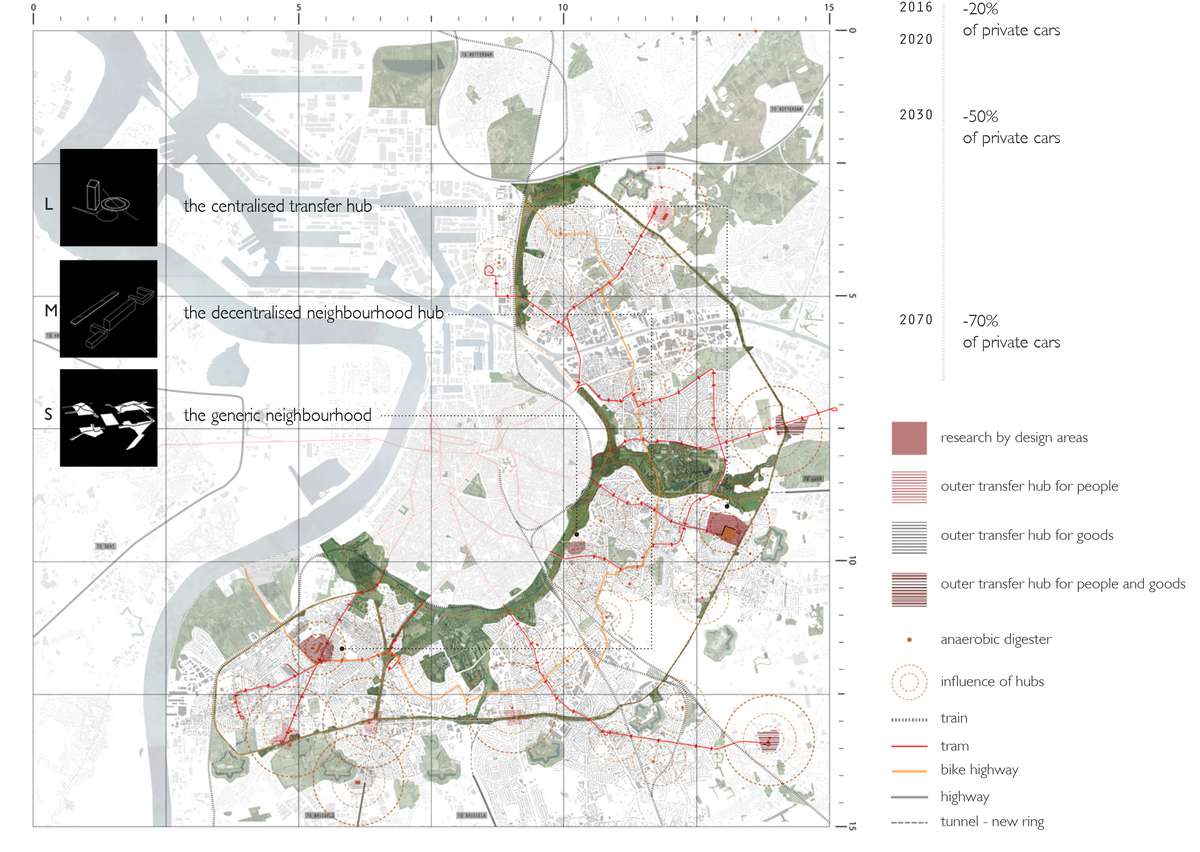
Strategic plan for the 20th century belt by 2070 - Reclaimed streets and extensive soft network - Research by design areas
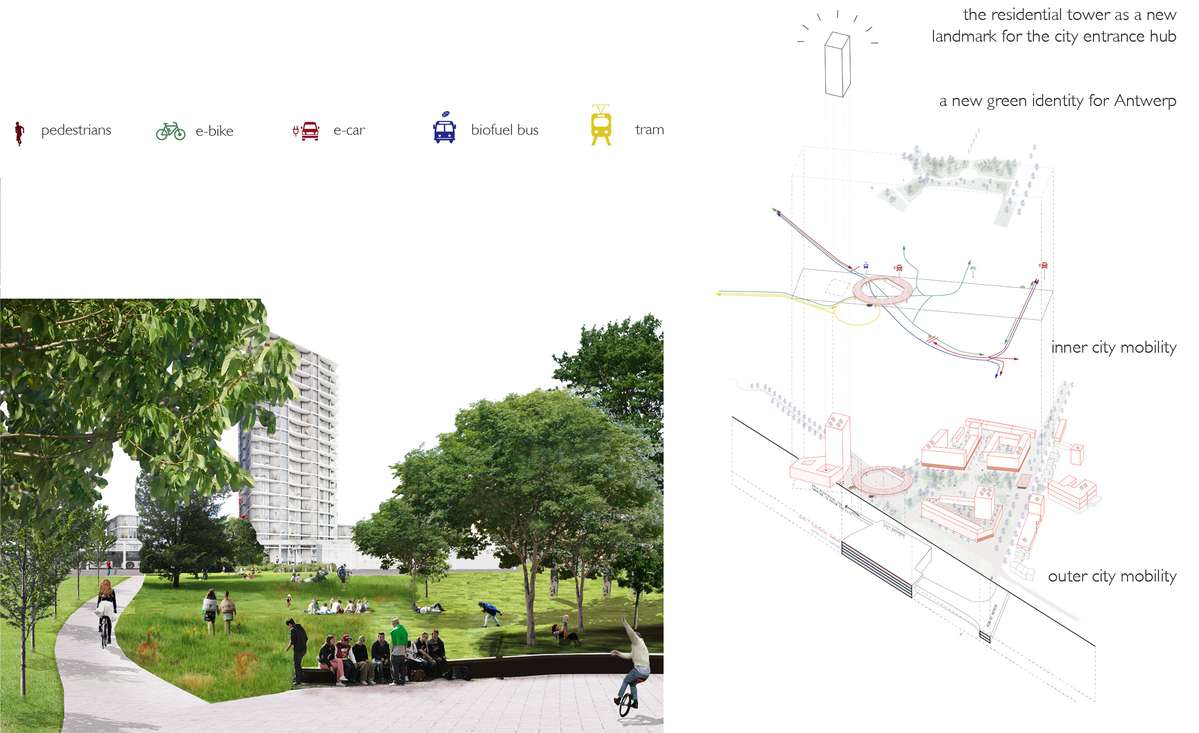
Test site I: The centralised transfer hub at the edge of the belt - Perspective view of the new entrance to the city from the park in 2070
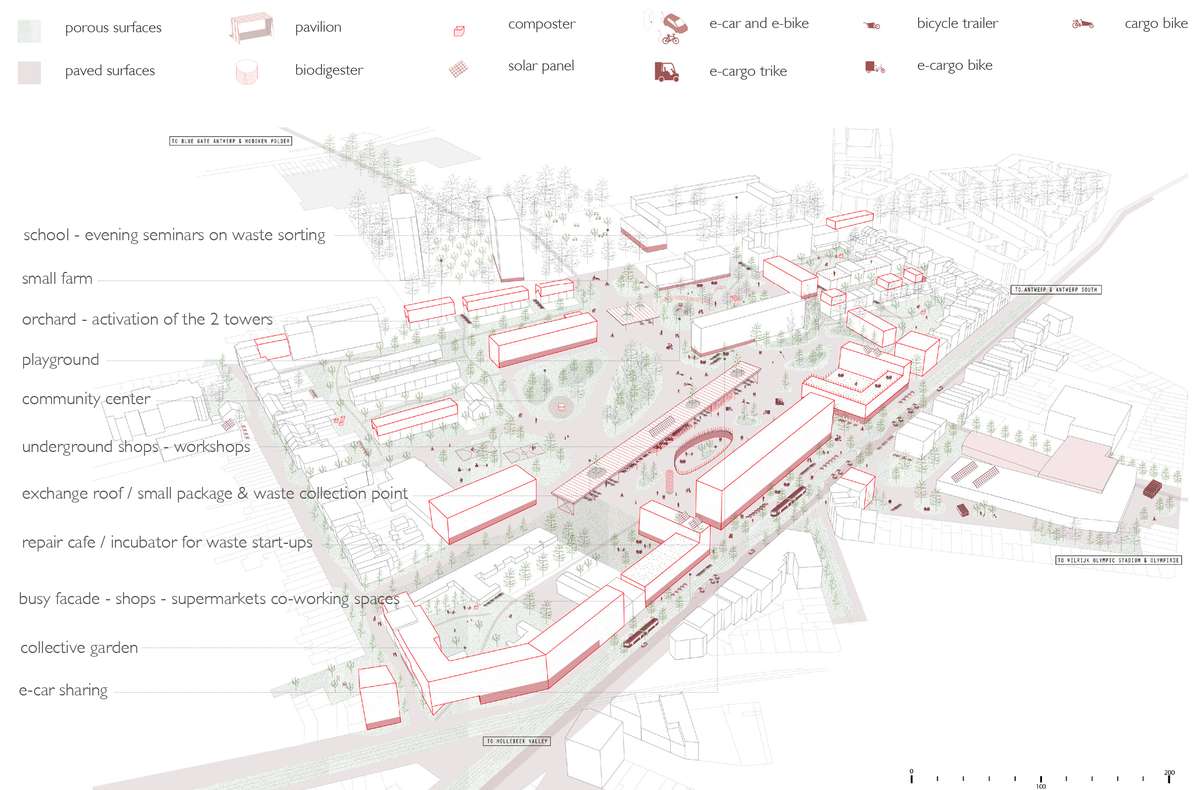
Test site II: The decentralised neighbourhood hub – Axonometric view in 2070
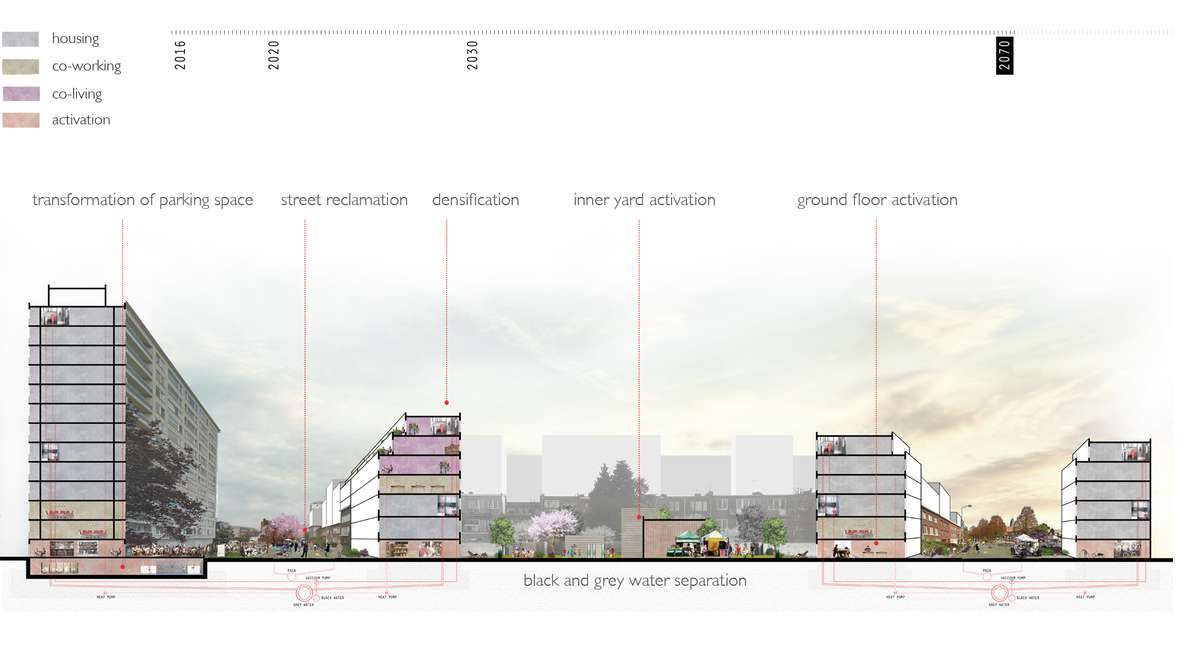
Test site III: The typical neighbourhood of the generic tissue condition – Perspective section in 2070
Synergies of Energy. Waste, Mobility
Synergies of Energy. Waste, Mobility

Rather than regarding energy, waste and mobility as separate entities we explore possible synergies and exchanges between them, using the theory of ‘systemic design’ as a background, and the systemic section as a tool. This approach helps us envision a new, more integrated urban environment, based on the interaction of different networks that gradually transform and activate space in the city, neighborhood and block scales, resulting in three typologies: the centralized transfer hub at the edge of the belt, the decentralized neighborhood hub and the typical neighborhood of the generic tissue condition.
Some of the main principles behind our strategies are minimization of the use of private car, multi-modality in the transportation of people and goods, resource exchange between different actors, proximity between living and working places, as well as activation of the neighborhood through the creation of shared space.
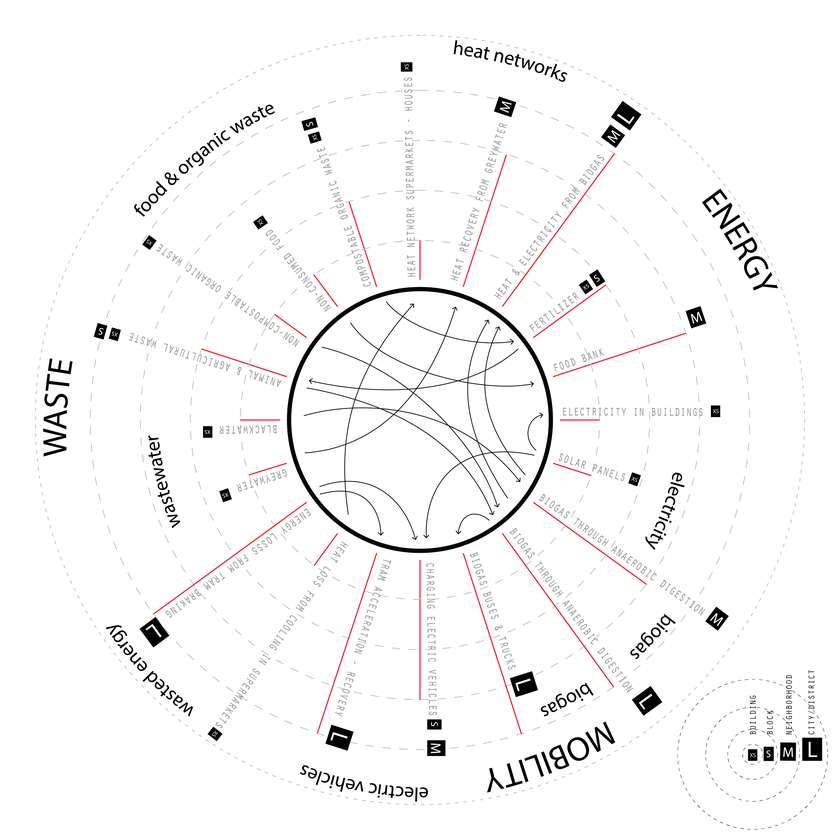
Synergies of Energy, Waste, Mobility at the city (L), neighbourhood (M) and building /block (S) scales
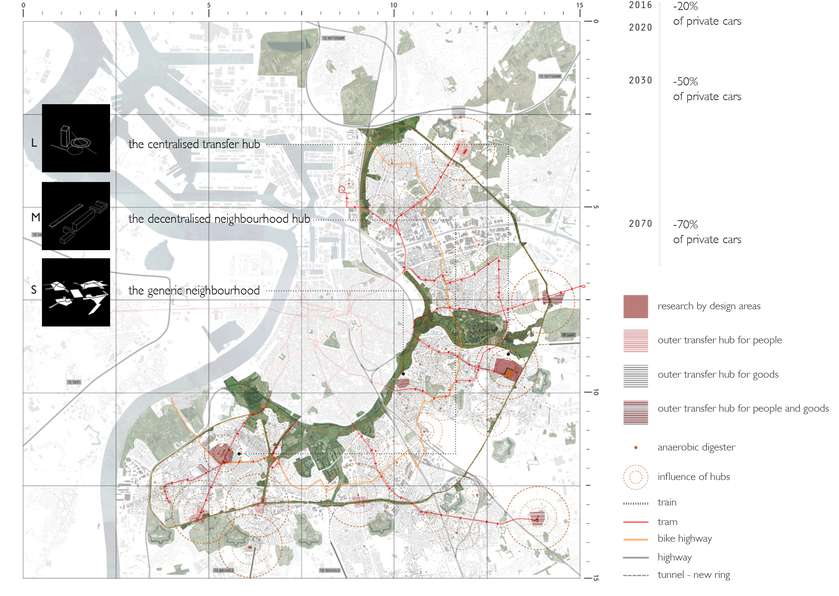
Strategic plan for the 20th century belt by 2070 - Reclaimed streets and extensive soft network - Research by design areas
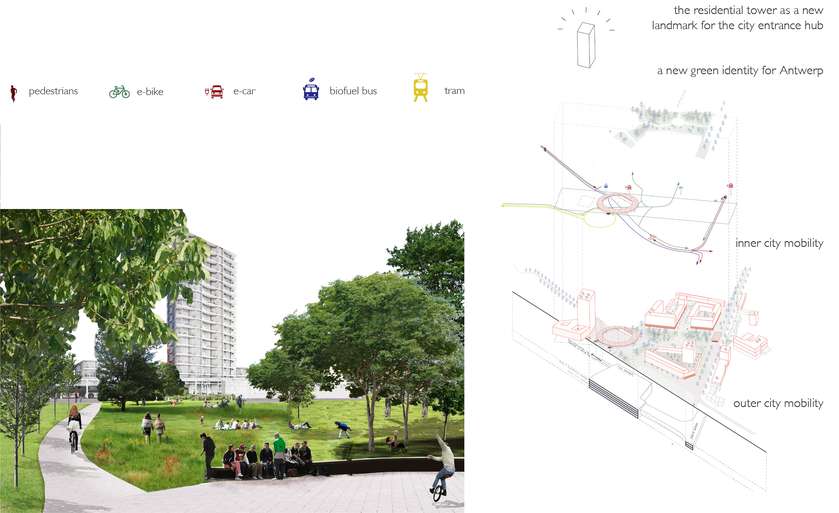
Test site I: The centralised transfer hub at the edge of the belt - Perspective view of the new entrance to the city from the park in 2070
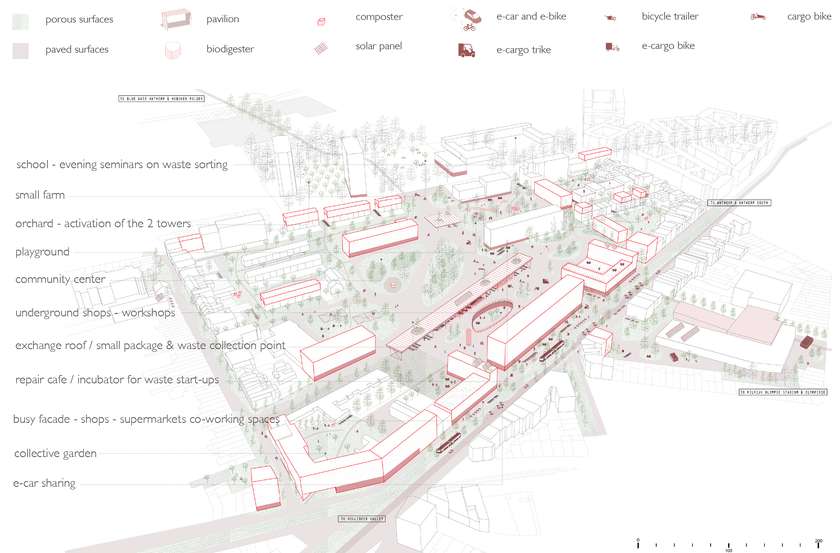
Test site II: The decentralised neighbourhood hub – Axonometric view in 2070
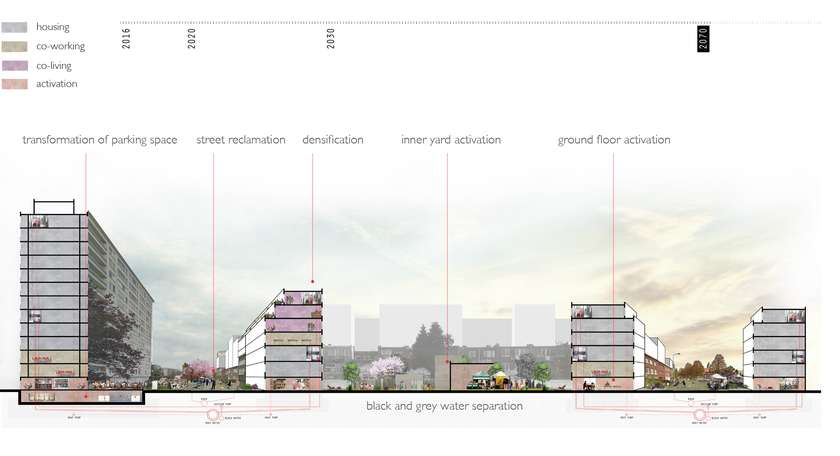
Test site III: The typical neighbourhood of the generic tissue condition – Perspective section in 2070